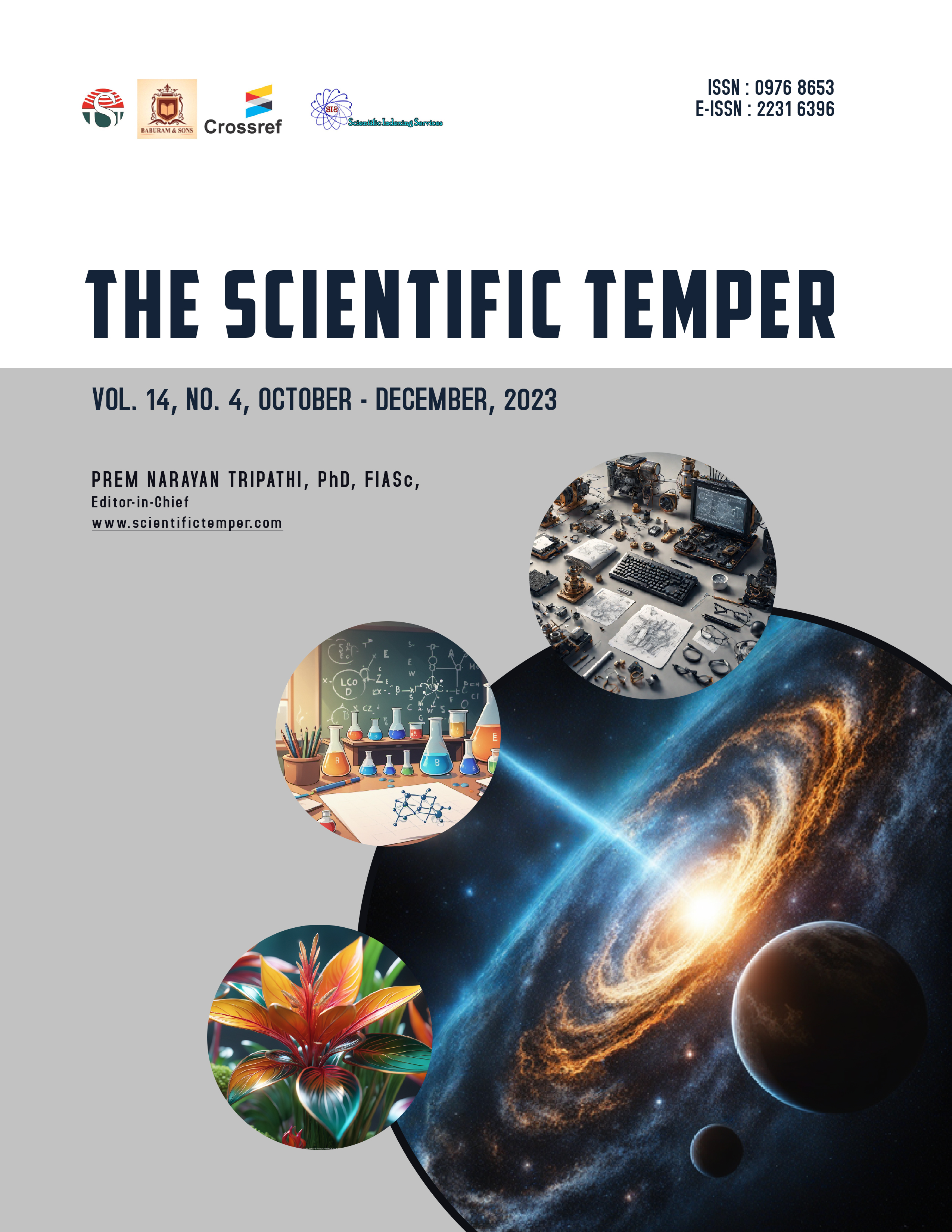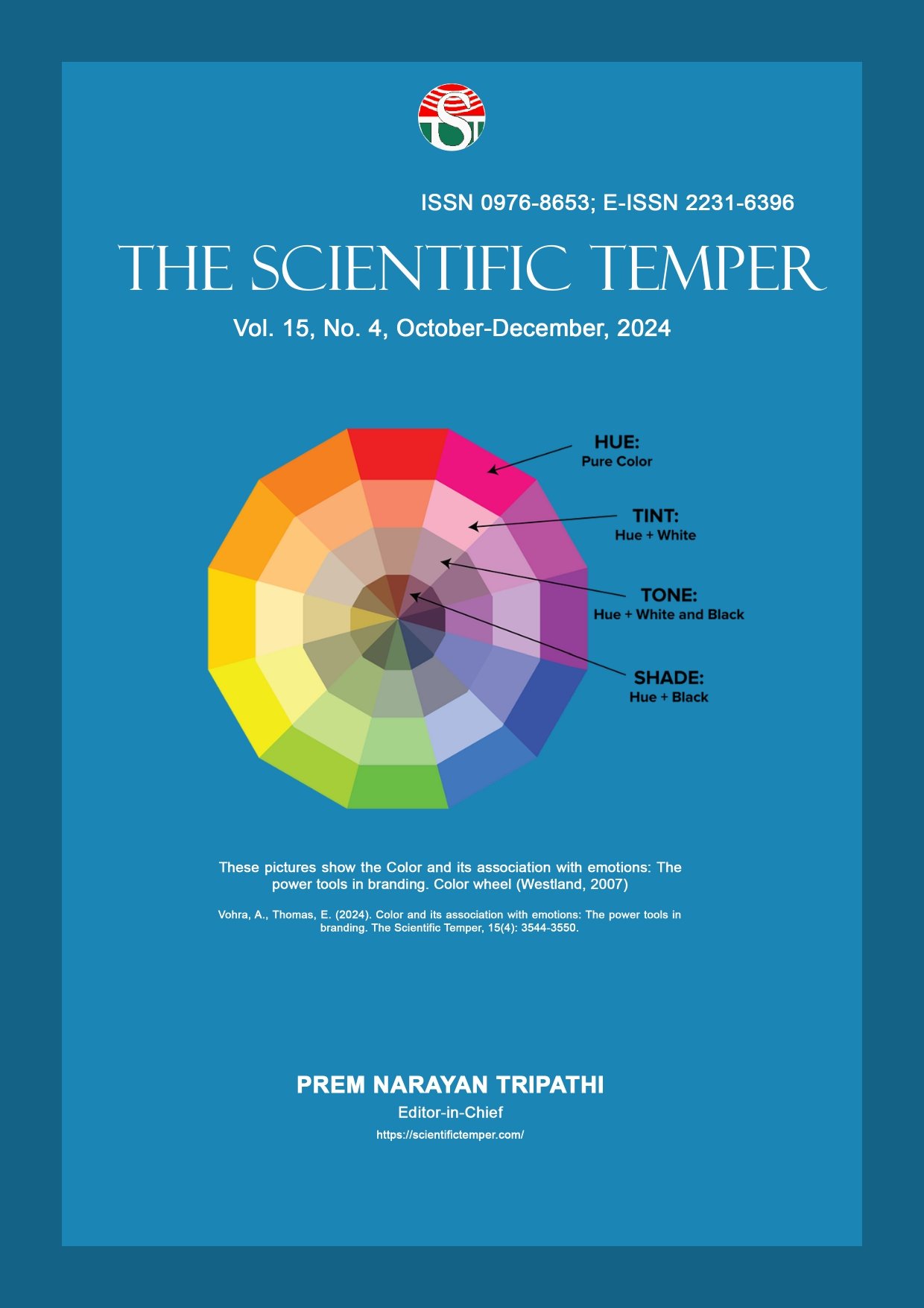Multistate modeling for estimating clinical outcomes of COVID-19 patients
Downloads
Published
DOI:
https://doi.org/10.58414/SCIENTIFICTEMPER.2023.14.4.05Keywords:
Multistate model, TPM, Stacked Probability plot, Competing risks, ICU, COVID-19Dimensions Badge
Issue
Section
License
Copyright (c) 2023 The Scientific Temper

This work is licensed under a Creative Commons Attribution-NonCommercial-ShareAlike 4.0 International License.
The severity of COVID-19 is often associated with severe pneumonia requiring intensive care unit (ICU) without Ventilation and ICU with ventilation. Clinical outcomes depend on the length of the ICU and the duration of the states. It is difficult to estimate how many people will experience each of these outcomes (discharge, death) due to the time dependence of the data and the potential for multiple events. Because of their time dependence, potential multiple events, and competing, terminal events of discharge, alive and death, estimating these quantities statistically is challenging. The main objective of this paper is to study the time-dependent progress of COVID-19 patients through the multistate approach with hazard rates and transition probabilities. The methodology allows for the analysis of active instances by accommodating censoring and the probability plots offer comprehensive information in a straightforward manner that can be easily shared with decision-makers in healthcare capacity planning.Abstract
How to Cite
Downloads
Similar Articles
- Archana Verma, Role of artificial intelligence in evaluating autism spectrum disorder , The Scientific Temper: Vol. 15 No. 02 (2024): The Scientific Temper
- Archana Verma, Application of metaverse technologies and artificial intelligence in smart cities , The Scientific Temper: Vol. 15 No. 02 (2024): The Scientific Temper
- P. S. Dheepika, V. Umadevi, An optimized approach for detection and mitigation of DDoS attack cloud using an ensembled deep learning approach , The Scientific Temper: Vol. 15 No. 03 (2024): The Scientific Temper
- Akshay J., G. Mahesh Kumar, B. H. Manjunath, Optimizing durability of the thin white topping applying Taguchi method using desirability function , The Scientific Temper: Vol. 14 No. 04 (2023): The Scientific Temper
- Sreenath M.V. Reddy, D. Annapurna, Anand Narasimhamurthy, Influence node analysis based on neighborhood influence vote rank method in social network , The Scientific Temper: Vol. 14 No. 04 (2023): The Scientific Temper
- Ayesha Shakith, L. Arockiam, Enhancing classification accuracy on code-mixed and imbalanced data using an adaptive deep autoencoder and XGBoost , The Scientific Temper: Vol. 15 No. 03 (2024): The Scientific Temper
- Monalisha Paul, Chaitali Kundu, Rudranil Bhowmik, Sanmoy Karmakar, Sandip K. Sinha, Nilanjana Chatterjee, The potential impression of fructo-oligosaccharides and zinc oxide nano composite against nicotine influenced cardiovascular changes , The Scientific Temper: Vol. 15 No. 03 (2024): The Scientific Temper
- Amanda Q. Okronipa, Jones Y. Nyame, Exploring the effect of perceived empathy and social presence on the intention to use AI in higher education , The Scientific Temper: Vol. 15 No. 04 (2024): The Scientific Temper
You may also start an advanced similarity search for this article.



